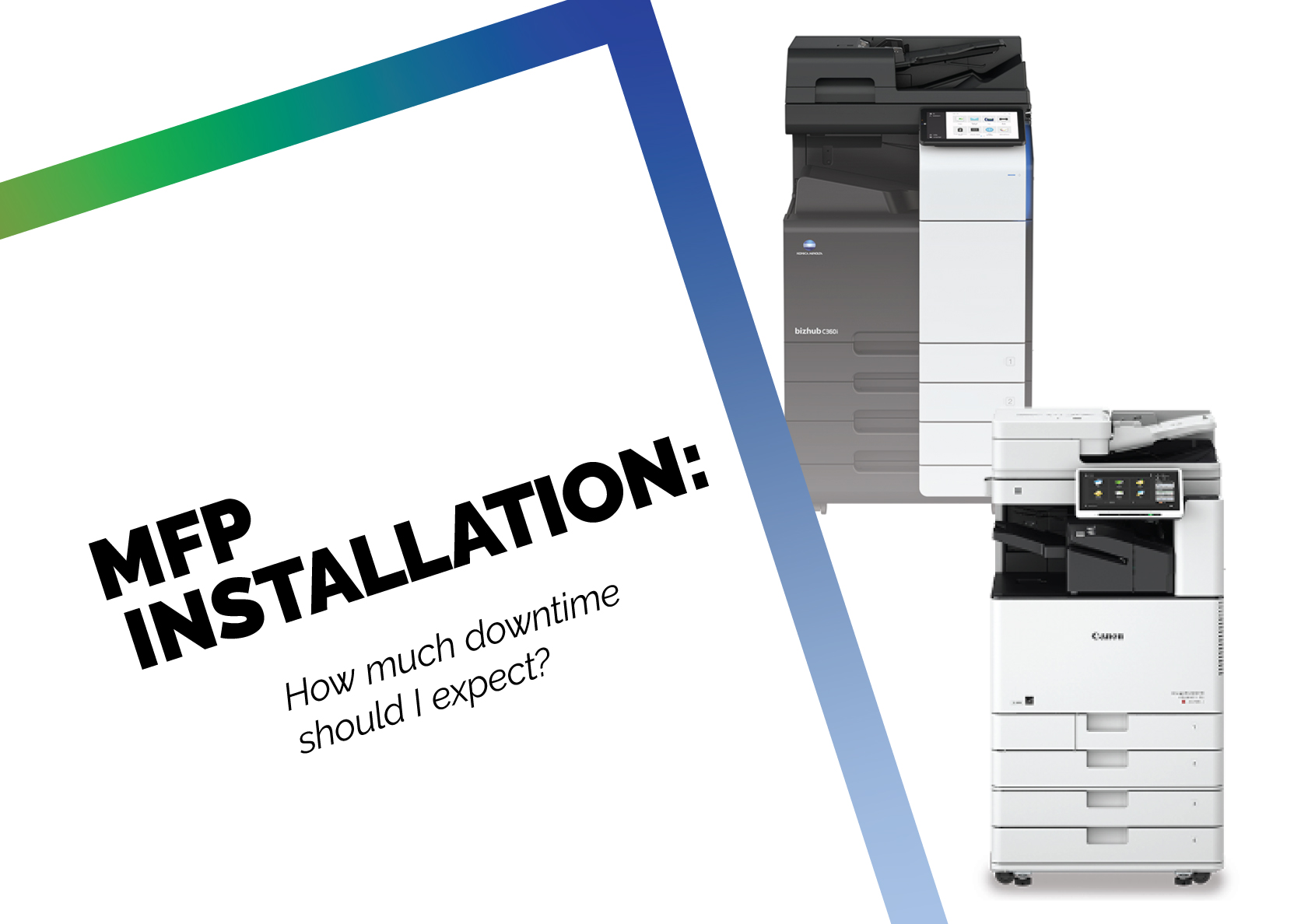3 min read
Building Culture That Works: Cobb Tech Named One of VA's Best
Cobb Technologies has been honored as one of the 2025 Best Places to Work in Virginia by Virginia Business and Best Companies Group. This prestigious...
2 min read
 Cathy Miles
Jun 10, 2020 3:21:37 PM
Cathy Miles
Jun 10, 2020 3:21:37 PM

The installation of a multi-function printer (MFP) can be akin to Christmas morning for an office that has dealt with an error-prone copier for the past few months or years, but without the proper preparation, installation can be another source of stress, and cause a reduction in productivity.
It is an old adage, but it most definitely applies: measure twice, cut once. The goal of any office technology installation is to minimize downtime, and in order to do that, every facet of delivery, and every detail of installation must be accounted for.
Before the machine is even delivered to your office, its network options should be configured. The most important employee of your company that should be involved in this process is your IT director, system administrator, or managed service provider — they will be able to provide details to the following:
These data points are necessary to pre-load before installation, to ensure that when your new MFP is finally installed, you only need to turn it on before using it, rather than spending time connecting devices (laptops, PCs, routers, etc.) and emails on your network to the new machine.
If your network has experienced any upgrades, this can be another potential roadblock to a smooth installation. If, for instance, your office has migrated from a server based email system to cloud-based, and want to use email address books rather than folders on your MFP, you will need to make your installer aware of this so they can be properly connected to the machine.
On average, an MFP is 200 to 600 pounds — meaning any obstacle, no matter the size, can significantly increase the time it take to install your new machine. While obstacles such as curbs, stairs, or tight spaces are easily navigable with the proper equipment, they can be practically impossible to overcome without specialized tools, or cause un-safe working conditions for the installers.
You will want to make sure your installer knows the exact path the MFP will take during the install, considering every scenario from your office’s parking lot, to plugging the machine in.
Some common obstacles are:
All of the devices from your network that will access your new MFP should also be present during installation. This will help to speed up the process of installing print drivers. If your workforce is mobile and gathering all of your devices simultaneously is impossible, you will want to set up a schedule for remote installations.
Also, be aware that upgrades to the speed of your MFP can cause power requirements to grow — so make sure that your installer has inspected the power source your MFP will be plugged into before installation happens.
Installation can take as little as an hour, and sometimes even less, if everything has been prepared for in advance. If there are surprises during installation, however, this can increase to multiple days in extreme circumstances.
To ensure a smooth delivery and installation, make sure to provide your installer with access to all the information they request, assign responsibility of certain tasks to individual employees in your company, and maintain ownership over the project. When working in tandem with your installer, you are guaranteed a swift and minimally-disruptive MFP installation.

3 min read
Cobb Technologies has been honored as one of the 2025 Best Places to Work in Virginia by Virginia Business and Best Companies Group. This prestigious...

5 min read
Cobb Technologies is honored to hold the SWaM (Small, Women-owned, and Minority-owned Business) certification, awarded by the Commonwealth of...

5 min read
Every year, thousands of Veterans transition from military service to civilian careers in Virginia, bringing invaluable skills and experiences to...